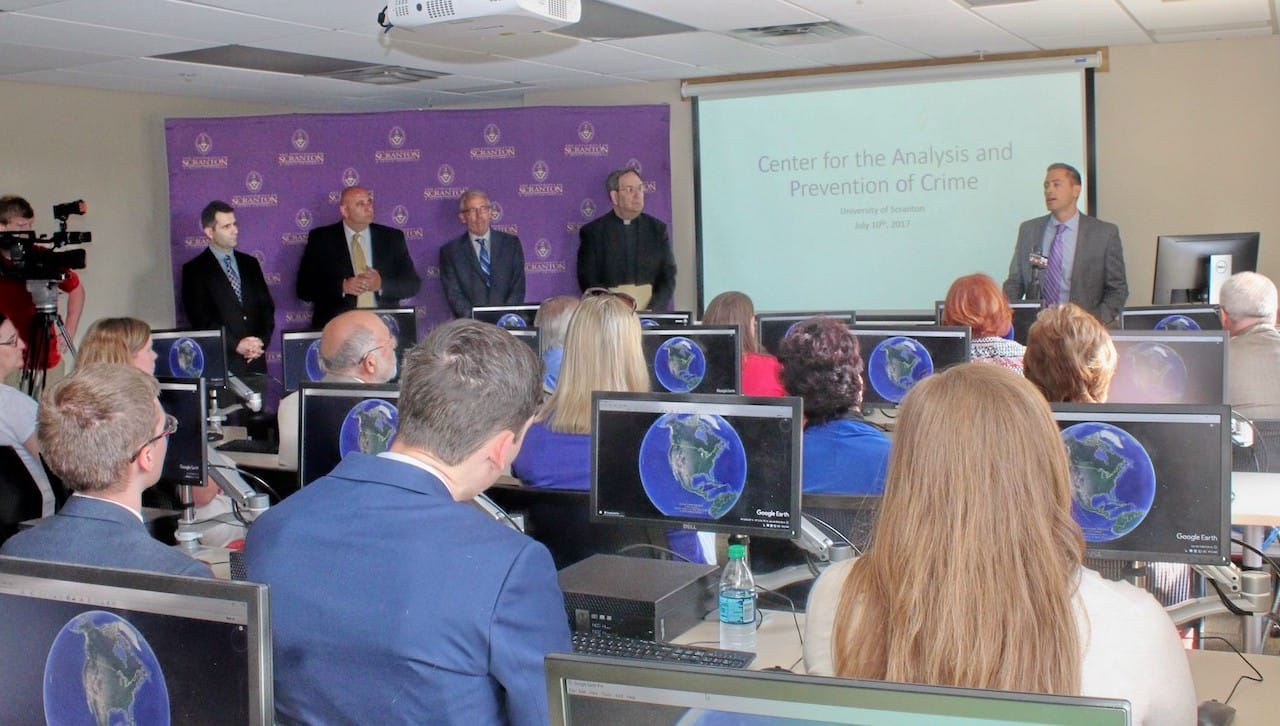University Receives Grant from Vera Institute

The Vera Institute of Justice announced The University of Scranton Center for the Analysis and Prevention of Crime was among the 16 organizations in the nation to be awarded an In Our Backyards Community Grant to provide data analysis and public information around the need to reduce incarceration in Lackawanna County. As part of this project, analysts from the University will set up a data-sharing, analysis and dissemination plan with the Lackawanna County Prison and other community partners.
“Incarceration is just one way society can deal with offending,” said Michael Jenkins, Ph.D., executive director of the Center for the Analysis and Prevention of Crime. “Unfortunately, our system has relied too much on prison as a crime prevention tool. We’ve learned a lot about the devastating social and economic effects of incarceration, and, as a result, people from all different backgrounds and ideologies recognize the need to reduce our reliance on it.”
Over the past 25 years, Lackawanna County’s incarceration rate has increased substantially, despite levels of crime remaining relatively low. Recent numbers suggest the rate of incarceration in Lackawanna County is nearly two times the national average and among the highest of any county in the northeastern United States.
“It’s important for the criminal justice system to be aware of the factors involved when making determinations regarding a decision on whether or not to incarcerate a person … factors such as the safety of the community and the effects of incarceration on the person and on that person’s family and loved ones,” said Timothy M. Betti, warden, Lackawanna County Prison. “It is my belief that there is a way to reduce the incarceration rates in Lackawanna County in a safe way. I am hopeful that this project will provide us with valuable information that will result in a more well informed process for those with the authority to make incarceration decisions. The Lackawanna County Prison staff and I look forward to this project and partnering with the University of Scranton and the Vera Institute of Justice.”
The 8-month project with the University’s Center for the Analysis and Prevention of Crime and Lackawanna County prison will include the set up and initial analysis of prison data to better understand Lackawanna County prison’s daily and admission populations. The Center’s goal is to institutionalize data analysis and evidence-based practice in the region, as part of its portfolio of projects. The project also intends to draw attention to the issues of justice related to incarceration through a public information strategy aimed at the Scranton community and the Center’s criminal justice partnerships.
This grant was made available through Vera’s In Our Backyards initiative, which has been at the forefront of research and analysis around rising incarceration in small cities and rural communities. This changing geography means that while campaigns in cities like New York, Atlanta, St. Louis, and Philadelphia have secured powerful commitments from elected leaders to close jails, hundreds of smaller communities are grappling with a quiet jail boom. The In Our Backyards Community Grants are meant to sustain and scale vital work already underway outside of major cities to end mass incarceration where it begins – at the local level.
In Our Backyards Community Grants represent the latest facet of Vera’s work to build national momentum to end mass incarceration. In total, Vera is investing $160,000 in 16 community organizations in 7 states, working on 11 diverse projects crafted to meet specific local challenges and issues related to incarceration and criminal justice reform. The 16 winning organizations will receive data and research support from Vera throughout the implementation of their projects.






